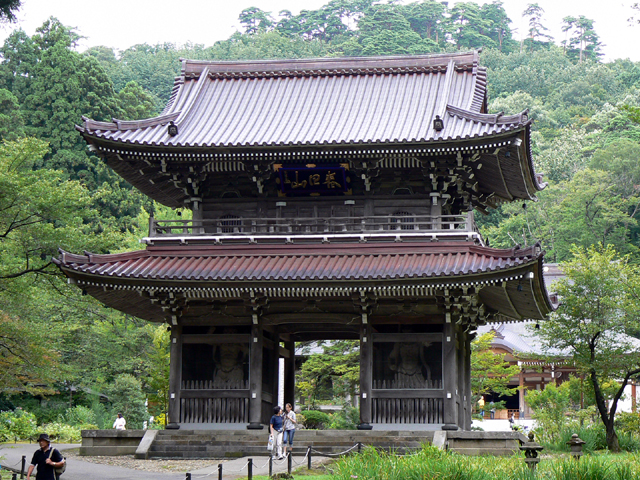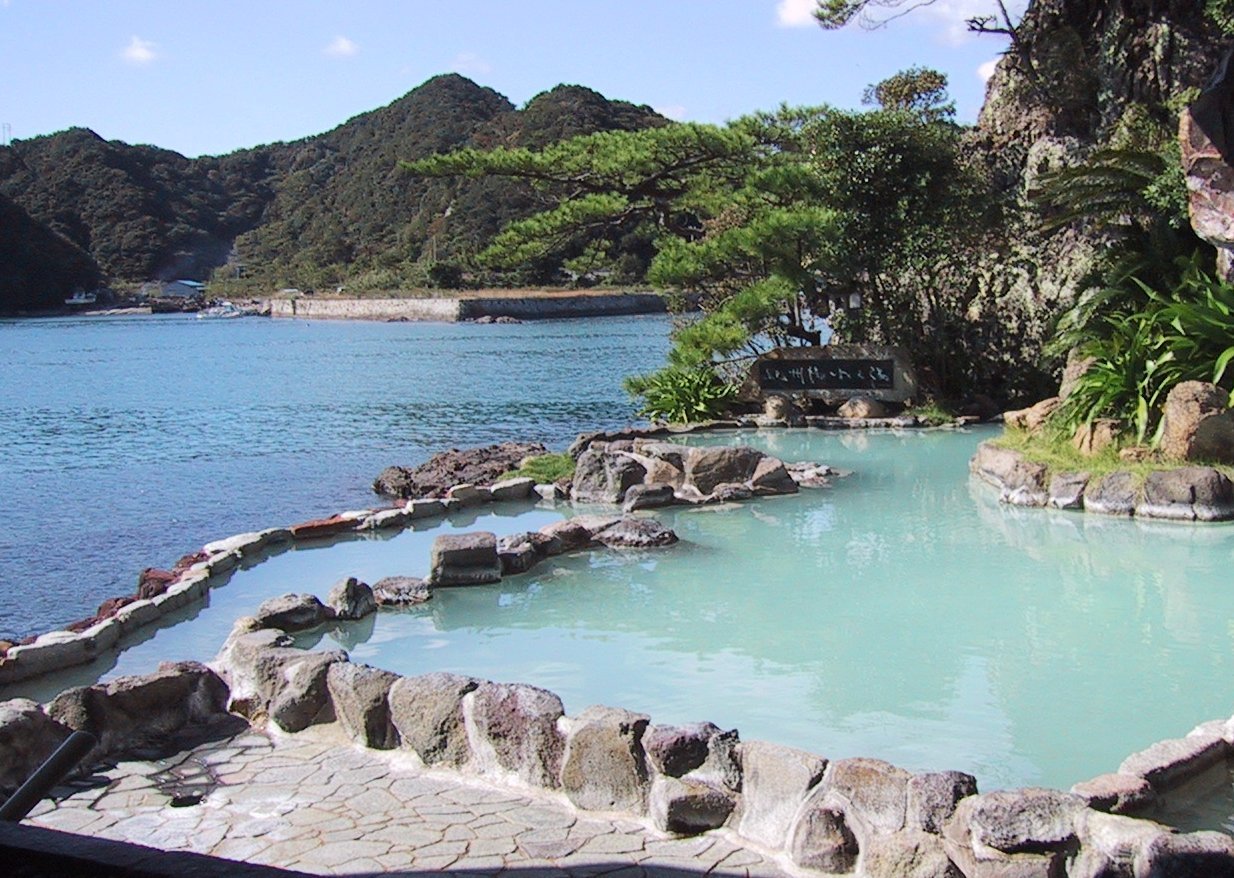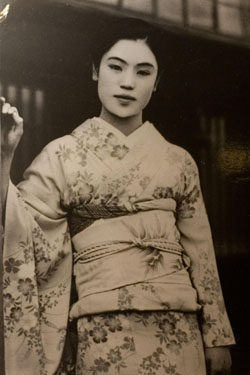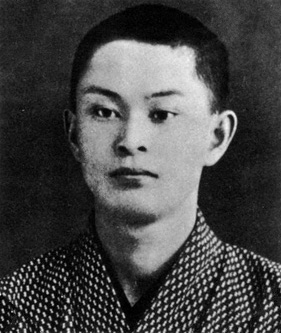|
Takahan Ryokan
Takahan Ryokan is a historic ryokan (Japanese inn) located in Yuzawa, Niigata Prefecture, Japan. The inn is over 800 years old. The inn has an onsen (bath) called "Tamago no Yu" (English: egg-water) that is supplied by natural hot springs with a slight amount of sulfur. The inn has approximately 20,000 annual visitors, many of whom visit to soak in Tamago no Yu. The setting for the book ''Snow Country is a novel by the Japanese author Yasunari Kawabata. The novel is considered a classic work of Japanese literature and was among the three novels the Nobel Committee cited in 1968, when Kawabata was awarded the Nobel Prize in Literature. Writ ...'' authored by Yasunari Kawabata is based upon Takahan Ryokan's location. The inn has preserved the room that Kawabata stayed and wrote in when he was there, along with some of the author's personal effects. References Further reading Crab, eel, pork are lionized at the Dragon inn External links Hotels in Japan Hot springs ... [...More Info...] [...Related Items...] OR: [Wikipedia] [Google] [Baidu] |
Ryokan (Japanese Inn)
A is a type of traditional Japanese inn that typically features ''tatami''-matted rooms, communal baths, and other public areas where visitors may wear yukata and talk with the owner. Ryokan have existed since the eighth century A.D. during the Keiun period, which is when the oldest hotel in the world, Nishiyama Onsen Keiunkan, was created in 705 A.D. Another old ryokan called Hōshi Ryokan was founded in 718 A.D. and was also known as the world's second oldest hotel. Such inns also served travelers along Japan's highways. Ryokan are difficult to find in Tokyo and other large cities because many are often much more expensive compared to modern hotels and hostels. As elsewhere in the world, hotels have become a standard in Japanese urban tourism. Nonetheless, some major cities do offer ryokan with competitive rates. Traditional ryokan are more commonly found in scenic rural areas, and in recent years, many ryokan have been redeveloped to their original style, particularly ... [...More Info...] [...Related Items...] OR: [Wikipedia] [Google] [Baidu] |
Yuzawa, Niigata
is a Towns of Japan, town located in Niigata Prefecture, Japan. , the town had an estimated population of 7,926, and a population density of 22.2 persons per km2. The total area of the town was . The town is famous for its onsen, hot springs. Geography Yuzawa is located in southwestern Niigata Prefecture, in a mountainous area bordering northern Nagano Prefecture and northern Gunma Prefecture. Due to its geographical location between the Sea of Japan and the surrounding Japanese Alps it has one of the highest annual snowfalls in Japan. There are numerous ski resorts within the region. Mount Naeba (2143 meters) is partly located within the town limits. Much of the town is within the borders of either the Jōshin'etsu-kōgen National Park or the Uonuma Renpo Prefectural Park. Surrounding municipalities *Niigata Prefecture **Minamiuonuma, Niigata, Minamiuonuma **Tōkamachi, Niigata, Tōkamachi **Tsunan, Niigata, Tsunan *Nagano Prefecture **Sakae, Nagano, Sakae *Gunma Prefecture * ... [...More Info...] [...Related Items...] OR: [Wikipedia] [Google] [Baidu] |
Niigata Prefecture
is a Prefectures of Japan, prefecture in the Chūbu region of Honshu of Japan. Niigata Prefecture has a population of 2,227,496 (1 July 2019) and is the List of Japanese prefectures by area, fifth-largest prefecture of Japan by geographic area at . Niigata Prefecture borders Toyama Prefecture and Nagano Prefecture to the southwest, Gunma Prefecture to the south, Fukushima Prefecture to the east, and Yamagata Prefecture to the northeast. Niigata, Niigata, Niigata is the capital and largest city of Niigata Prefecture, with other major cities including Nagaoka, Niigata, Nagaoka, Jōetsu, Niigata, Jōetsu, and Sanjō, Niigata, Sanjō. Niigata Prefecture contains the Niigata Major Metropolitan Area centered on Niigata with a population of 1,395,612, the largest metropolitan area on the Sea of Japan coast and the twelfth-largest in Japan. Niigata Prefecture is part of the historic Hokuriku region and features Sado, Niigata, Sado Island, the sixth largest island of Japan in area follo ... [...More Info...] [...Related Items...] OR: [Wikipedia] [Google] [Baidu] |
Japan
Japan ( ja, 日本, or , and formally , ''Nihonkoku'') is an island country in East Asia. It is situated in the northwest Pacific Ocean, and is bordered on the west by the Sea of Japan, while extending from the Sea of Okhotsk in the north toward the East China Sea, Philippine Sea, and Taiwan in the south. Japan is a part of the Ring of Fire, and spans Japanese archipelago, an archipelago of List of islands of Japan, 6852 islands covering ; the five main islands are Hokkaido, Honshu (the "mainland"), Shikoku, Kyushu, and Okinawa Island, Okinawa. Tokyo is the Capital of Japan, nation's capital and largest city, followed by Yokohama, Osaka, Nagoya, Sapporo, Fukuoka, Kobe, and Kyoto. Japan is the List of countries and dependencies by population, eleventh most populous country in the world, as well as one of the List of countries and dependencies by population density, most densely populated and Urbanization by country, urbanized. About three-fourths of Geography of Japan, the c ... [...More Info...] [...Related Items...] OR: [Wikipedia] [Google] [Baidu] |
Onsen
In Japan, are the country's hot springs and the bathing facilities and traditional inns around them. As a volcanically active country, Japan has many onsens scattered throughout all of its major islands. There are approximately 25,000 hot spring sources throughout Japan that provide hot mineral water to about 3,000 genuine onsen establishments. Onsens come in many types and shapes, including and . Baths may be either publicly run by a municipality or privately, often as part of a hotel, ''ryokan'', or . The presence of an onsen is often indicated on signs and maps by the symbol ♨ or the kanji (''yu'', meaning "hot water"). Sometimes the simpler hiragana character ゆ (''yu''), understandable to younger children, is used. Traditionally, onsens were located outdoors, although many inns have now built indoor bathing facilities as well. Nowadays, as most households have their own bath, the number of traditional public baths has decreased, but the number of sightseeing ho ... [...More Info...] [...Related Items...] OR: [Wikipedia] [Google] [Baidu] |
Hot Spring
A hot spring, hydrothermal spring, or geothermal spring is a spring produced by the emergence of geothermally heated groundwater onto the surface of the Earth. The groundwater is heated either by shallow bodies of magma (molten rock) or by circulation through faults to hot rock deep in the Earth's crust. In either case, the ultimate source of the heat is radioactive decay of naturally occurring radioactive elements in the Earth's mantle, the layer beneath the crust. Hot spring water often contains large amounts of dissolved minerals. The chemistry of hot springs ranges from acid sulfate springs with a pH as low as 0.8, to alkaline chloride springs saturated with silica, to bicarbonate springs saturated with carbon dioxide and carbonate minerals. Some springs also contain abundant dissolved iron. The minerals brought to the surface in hot springs often feed communities of extremophiles, microorganisms adapted to extreme conditions, and it is possible that life on Earth had its ... [...More Info...] [...Related Items...] OR: [Wikipedia] [Google] [Baidu] |
Snow Country
is a novel by the Japanese author Yasunari Kawabata. The novel is considered a classic work of Japanese literature and was among the three novels the Nobel Committee cited in 1968, when Kawabata was awarded the Nobel Prize in Literature. Writing process Gwenn Boardman Petersen uses ''Snow Country'' as an example of how he often composed his works. While writing that Japanese novelists often publish "their works in serial form and under various titles" she observes Kawabata is "further noted for his habit of rewriting, adding segments, and making changes in titles and content alike." The first segment, titled appeared in January 1935. Kawabata later wrote that he could not finish his manuscript by the submission deadline of this literary journal, and decided to keep writing and submit a second version of this segment, titled to the general-interest magazine several days later. Kawabata continued to write about the characters, and five more segments were published over the ... [...More Info...] [...Related Items...] OR: [Wikipedia] [Google] [Baidu] |
Yasunari Kawabata
was a Japanese novelist and short story writer whose spare, lyrical, subtly shaded prose works won him the Nobel Prize in Literature in 1968, the first Japanese author to receive the award. His works have enjoyed broad international appeal and are still widely read. Early life Born into a well-established family in Osaka, Japan, Kawabata was orphaned by the time he was four, after which he lived with his grandparents. He had an older sister who was taken in by an aunt, and whom he met only once thereafter, in July 1909, when he was ten. She died when Kawabata was 11. Kawabata's grandmother died in September 1906, when he was seven, and his grandfather in May 1914, when he was fifteen. Having lost all close paternal relatives, Kawabata moved in with his mother's family, the Kurodas. However, in January 1916, he moved into a boarding house near the junior high school (comparable to a modern high school) to which he had formerly commuted by train. After graduating in March 1917 ... [...More Info...] [...Related Items...] OR: [Wikipedia] [Google] [Baidu] |
Hotels In Japan
A hotel is an establishment that provides paid lodging on a short-term basis. Facilities provided inside a hotel room may range from a modest-quality mattress in a small room to large suites with bigger, higher-quality beds, a dresser, a refrigerator and other kitchen facilities, upholstered chairs, a flat screen television, and en-suite bathrooms. Small, lower-priced hotels may offer only the most basic guest services and facilities. Larger, higher-priced hotels may provide additional guest facilities such as a swimming pool, business centre (with computers, printers, and other office equipment), childcare, conference and event facilities, tennis or basketball courts, gymnasium, restaurants, day spa, and social function services. Hotel rooms are usually numbered (or named in some smaller hotels and B&Bs) to allow guests to identify their room. Some boutique, high-end hotels have custom decorated rooms. Some hotels offer meals as part of a room and board arrangement. In Jap ... [...More Info...] [...Related Items...] OR: [Wikipedia] [Google] [Baidu] |



.jpg)


